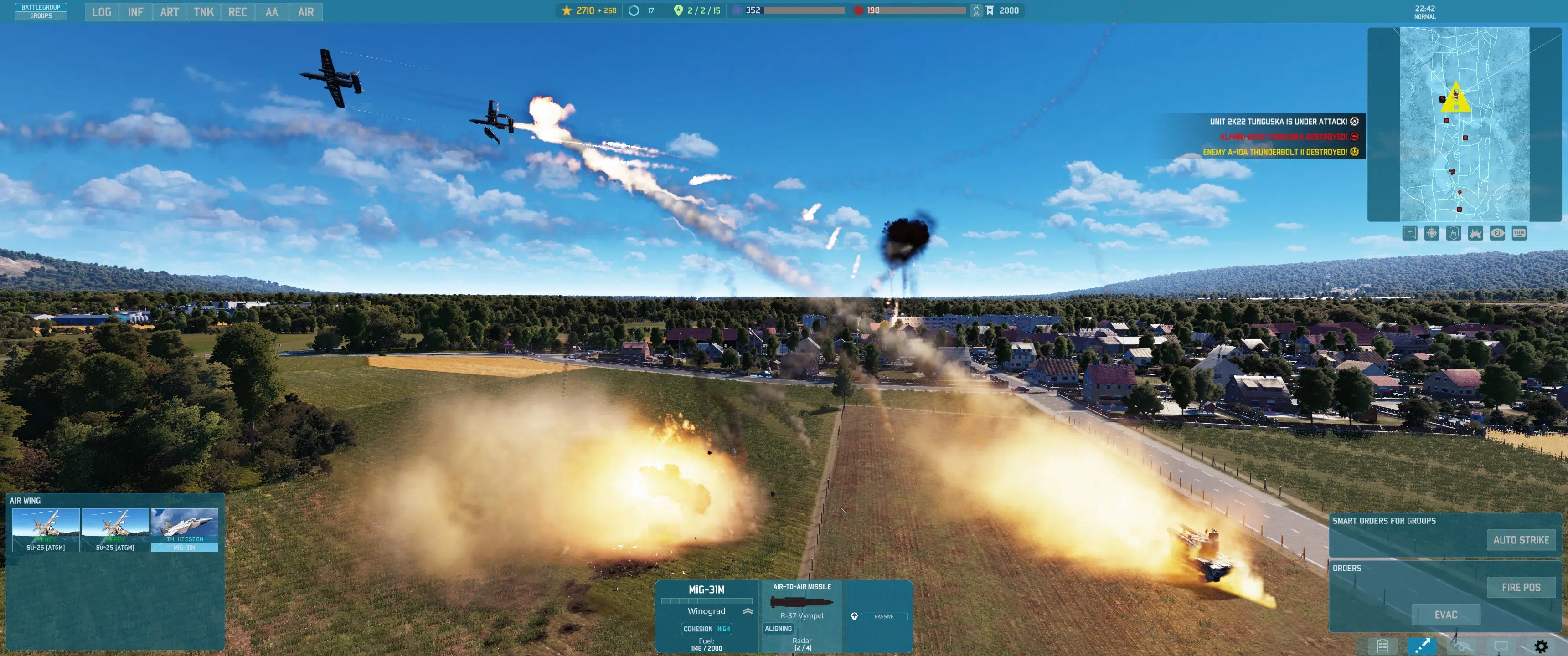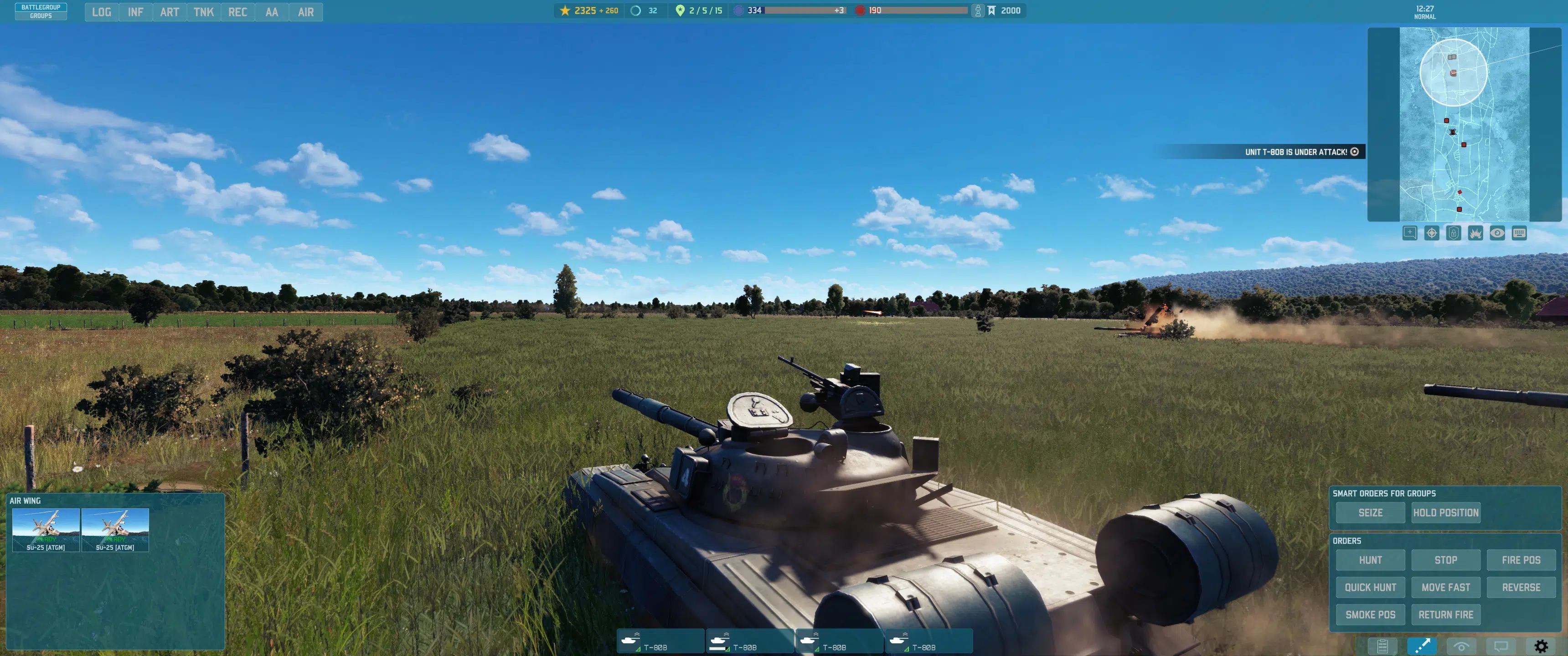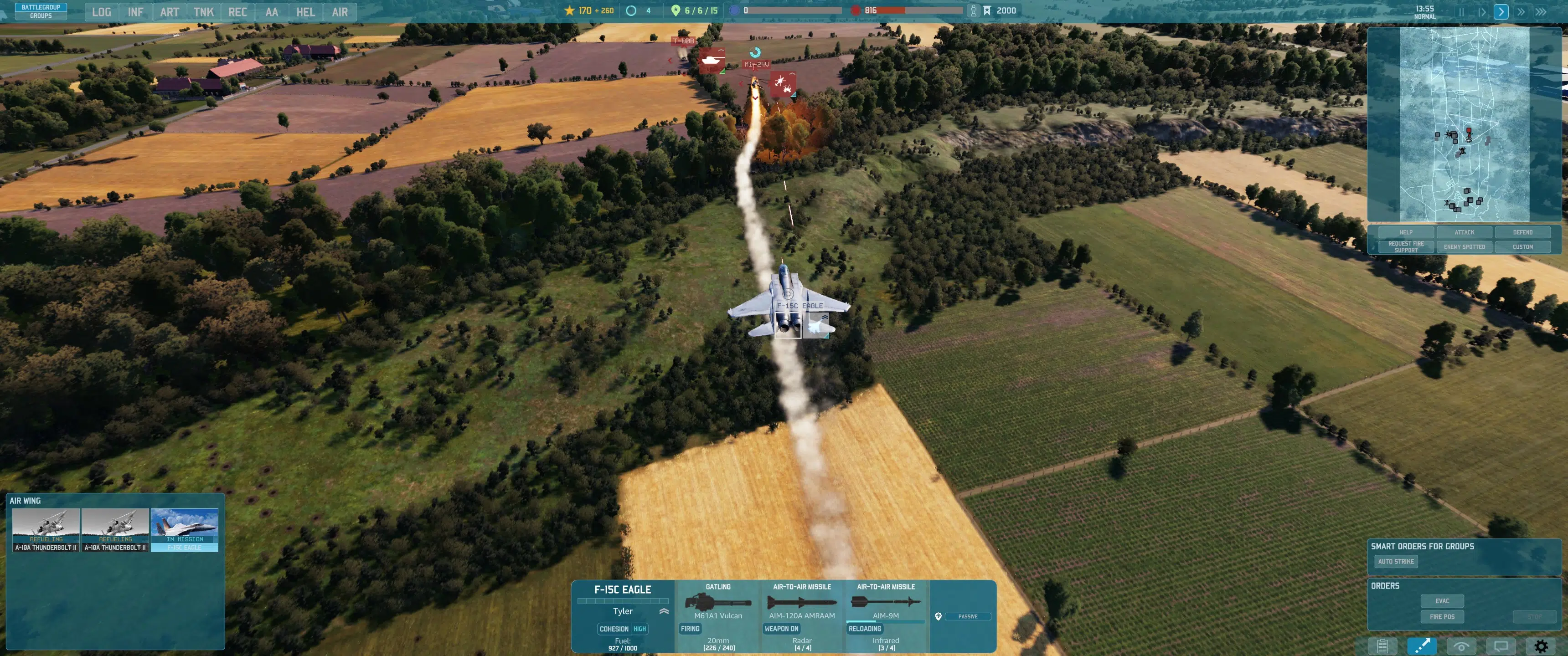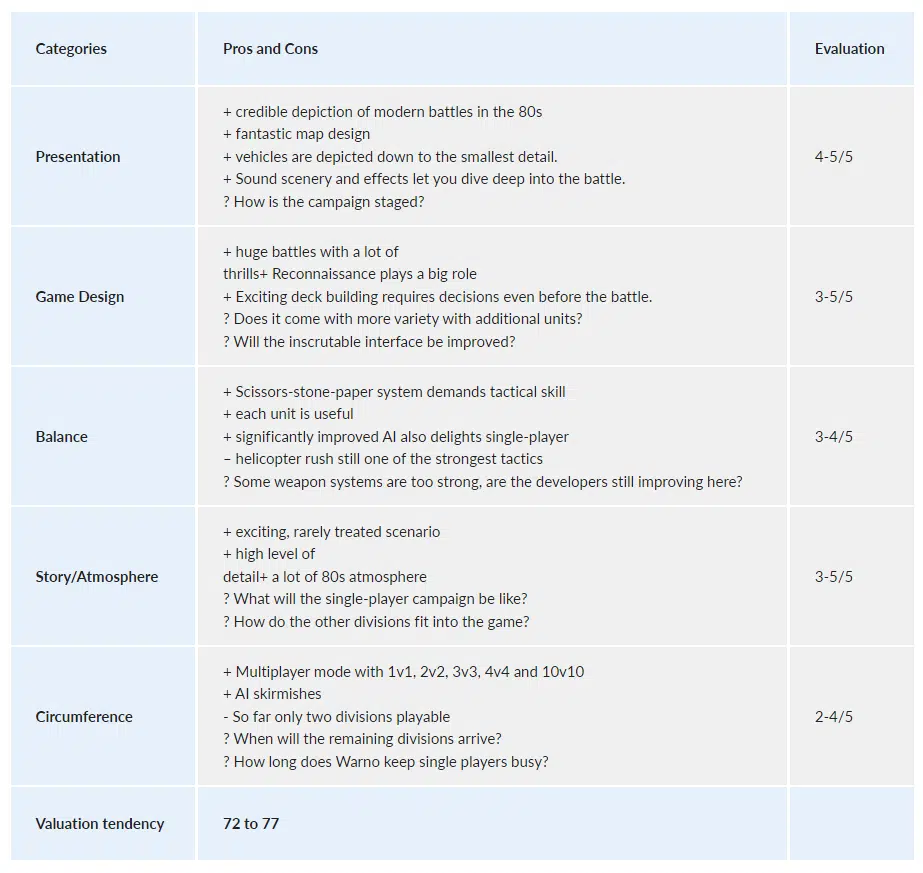Warno brings WWIII back to the strategy genre and presents himself in the test as a good old friend we haven’t seen for a long time.
Warno sends you back to the 1980s: the Warsaw Pact and NATO clash, World War III breaks out and you are in the thick of the action as a real-time strategy general. Wait, does that sound familiar? It’s true: Warno is not only the spiritual successor to the Wargame and Steel Division series from the same developer. No, it is rather the logical continuation of the old Eugen Systems games and brings together many aspects of both series as well as the old World in Conflict. In Warno, Eugen Systems again relies on a proven but demanding real-time strategy, which plays out overall in a rounder and smoother way than in Wargame: Red Dragon.
First of all, Warno is still in (Early Access sur Steam) at the current price of 30 euros and only a fraction of the planned functionality is available. But I couldn’t wait to immerse myself again in exciting and demanding battles with (almost) modern warfare equipment. So I jumped straight into my gala uniform, sweatpants, and gaming hoddie, and took charge.
In Warno you are spoiled for choice
In the Early Access version, only two divisions are available: on the NATO side, the American 3rd Armored Division and on the Soviet side, the 79th Guards Regiment. Once we have chosen our side, we come directly to the first major novelty compared to previous games.
In Wargame: Red Dragon you still had the option to build completely free decks from vehicles of all nations or focus on one nation and/or combat type like armor and get possible bonuses . In Warno, you must choose a historical division from which to build your deck. In the full version of the game there should be a large number of divisions. Eugen promises all formations (from the Fulda Gap) of both sides, which can be used in different roles, such as breakthrough, defense or support.
(Suits you if)
(Suits you if)
(Suits you if)
(Suits you if).
- Looking for exciting and tactically demanding real-time strategy combat in multiplayer.
- Microphone management is your passion.
- You are passionate about alternate historical scenarios and detailed military technology.
(Not for you if)
(Not for you if)
(Not for you if)
- you prefer to spend your time in the game solo.
- you dislike stress and hasty decisions.
You have to make important decisions when building your battle party. You choose the type, number and training level of each unit you lead into battle, and thus decide the character and playstyle of your troop. » src= »https://www.gamesdone/wp-content/uploads/2022/01/When-assembling-your-battle-group-scaled.jpg » width= »2048″ height= »857″ /☻
Currently, the choice is still very limited. Still missing either vehicle variant like the M1 Abrams with the 105mm gun. But the game has only recently entered the early access phase and Eugen Systems promises for its release more than 600 vehicles for the belligerents of the United States, the United Kingdom, the Federal Republic of Germany and the GDR. , France and of course the USSR.
It must be said that the quasi-predecessor Wargame: Red Dragon offers more than 2,000 different units, even if they are spread over many more factions. But amateur strategists shouldn’t be discouraged: Eugen Systems has already fed the game with other content after the release of Steel Division 2, including new divisions, units and even factions.
Hektic and not for beginners
For now, only two game modes are included in the Early Access version : multiplayer up to eight players (10vs10 should follow) and skirmishes in solo. Capture the Flag is the only game mode. Using command vehicles, you capture sectors on the map.
Each sector has a point value between one and three, and as soon as one side controls more points than their opponent, their point count fills up. If you reach a certain number of points or destroy the enemy, you can declare yourself the winner. You don’t build a base, you order supplies from the menu with earned points, fresh troops then move from the edge of the map to the battlefield.
An aggressive style of play is clearly an advantage here, which on the one hand makes me happy as a tank player, but the pressure of time and points favors the use of rush tactics like the heavy use of helicopters . Before starting real-time battles, think about tactics and starting units, which is the key to success, especially in multiplayer battles. To do this, you can use the chat and place a series of markers on the map.
The tutorial is currently still locked, which poses a big challenge for newcomers to understand what is going on here! Because Warno is not an easy game for beginners. Eugen Systems apparently assumes that every Warno player already has Wargame or Steel Division experience. As a beginner, but also as a rusty veteran, you should first play a game or two against the light AI in order to get a feel for the game.
Because Warno shines again with a deep and complex scissors-rock-paper system. Tanks have no business in towns, infantry are mowed down by machine guns in open country, and helicopters are vulnerable to anti-aircraft defense.
The best of two worlds
Eugen Systems has learned from the mistakes made in previous titles and incorporated many comfort improvements into Warno. Thus, you can already give orders when setting up units, for example to order your tank to move quickly towards an important control point in the center of the map. A promising new feature is the advanced scout deployment, which makes using this essential unit even more exciting. Thus, from the start of a game, skirmishes occur around important ranges of hills or forest areas.
Another exciting new feature is aerial combat. Each plane has a Time-to-target: the game indicates how long it takes the unit to reach the combat zone. In particular, this makes the use of interceptors and air superiority fighters more complex than before. Enemy air strikes must be anticipated or own fighters must already be used to secure the airspace in the rear area.
But despite all these positive gameplay changes, Eugen failed to clean up the interface. While the user interfaces of Wargame and Steel Division were still quite spartan and sometimes we wished for a little extra information, Warno overwhelms us with a useless multitude of information, graphics and data. It was already better in the past. ;
Draft evaluation framework
Conclusion of the writing
There’s not much to Warno’s Early Access build just yet, but what’s there is really fun and has some genuine anticipation. The new deck-building system promises exciting battles and demands creative problem-solving. In large multiplayer games, Warno is almost reminiscent of World in Conflict with its distribution of roles. I’m sure so far we’ve only seen a tiny fraction of Warno’s potential. There are still some big balance issues between Divisions, the interface urgently needs some cleaning up, and it remains to be seen how the single-player campaign and operations play out. Those who have never played an Eugen Systems game will not be happy with Warno. On the other hand, veterans will be delighted with the many small improvements made.




